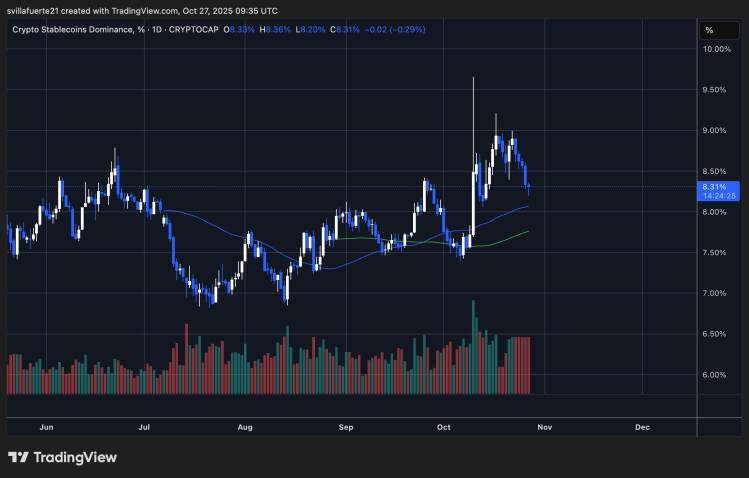Japan has officially entered the era of regulated stablecoins with the launch of JPYC EX, the country’s first fully licensed digital yen according to the revised version. Payment Services Law. This milestone marks a pivotal moment for Japan’s financial sector, uniting traditional banking infrastructure with the Web3 ecosystem.
Related reading
Based on previous versions of JPYC, the new JPYC EX is designed to serve as a yen-compatible stablecoin that connects the country’s banking system with blockchain-based commerce, DeFi applications and cross-border payments. With full legal authorization and asset backing, it positions the yen as a future cornerstone of global digital finance.
According to CryptoQuant, the total market capitalization of stablecoins has surpassed $150 billion, forming the liquidity backbone for crypto markets, DeFi protocols, and global payments. Analysts at Citi and Bloomberg project that this figure could expand to between $1.6 and $4 trillion by 2030. Within that rapid growth, JPYC is expected to capture approximately 2% of the market, reaching a valuation of around $70 billion.
A fully regulated digital yen uniting Japan’s finances and the Web3
What sets JPYC EX apart from other stablecoins is its combination of regulatory clarity, asset support, and technical versatility. National bank deposits and Japanese government bonds fully collateralize each token, ensuring complete transparency and stability. This structure makes JPYC EX one of the most legally sound stablecoins in the world. A benchmark for compliance-driven innovation in digital finance.
Built on top of Ethereum, Polygon, and Avalanche, JPYC EX offers instant yen transfers with near-zero fees. Making it a practical tool for both companies and individuals. It supports commerce, payroll, peer-to-peer payments, and DeFi applications, and offers the efficiency of blockchain without sacrificing legal or operational safeguards.
Related reading
JPYC EX also aligns closely with Japan’s digital transformation strategy, which aims to merge traditional finance with emerging Web3 systems. Serving as a settlement layer for e-commerce platforms, NFT marketplaces, and cross-border transactions, the stablecoin enables instant yen transfers across Asia, reducing costs and increasing accessibility for international trade.
Looking ahead, analysts predict that the JPYC market capitalization could reach $70 billion by 2030. It represents approximately 2% of the global stablecoin market. This growth potential underlines Japan’s ambition to establish the digital yen as a key pillar of the decentralized global economy. With its combination of regulatory trust, technological precision, and global reach, JPYC EX can redefine how national currencies operate in the Web3 era.
Stablecoin Dominance Shows Cooling Phase After Recent Surge
The chart shows that stablecoin market dominance currently stands at around 8.31%, following a sharp rise in early October that pushed the ratio above 9%. This level often indicates increased demand for liquidity and safety, as traders move capital into stable assets amid market uncertainty.
In recent months, dominance has steadily risen from the 7.3% to 7.5% range, reflecting a cautious sentiment as Bitcoin and major altcoins face selling pressure. However, the recent pullback suggests that some funds are starting to pivot back into risk assets, a possible early sign of market stabilization.

Technically, the dominance remains above the 50-day and 200-day moving averages, indicating a broader bullish trend in liquidity positioning. If this level is maintained, it can serve as a buffer during continued volatility. Conversely, a sustained drop below 8% could indicate that traders are redeploying capital into crypto assets, possibly fueling near-term rallies.
Related reading
Stablecoin dominance remains high, a sign that market participants still prefer to hold dry powder. Until dominance begins a more decisive decline, this cautious stance is likely to persist, underscoring the market’s fragile balance between risk aversion and willingness to re-enter volatile assets.
Featured image from ChatGPT, chart from TradingView.com



